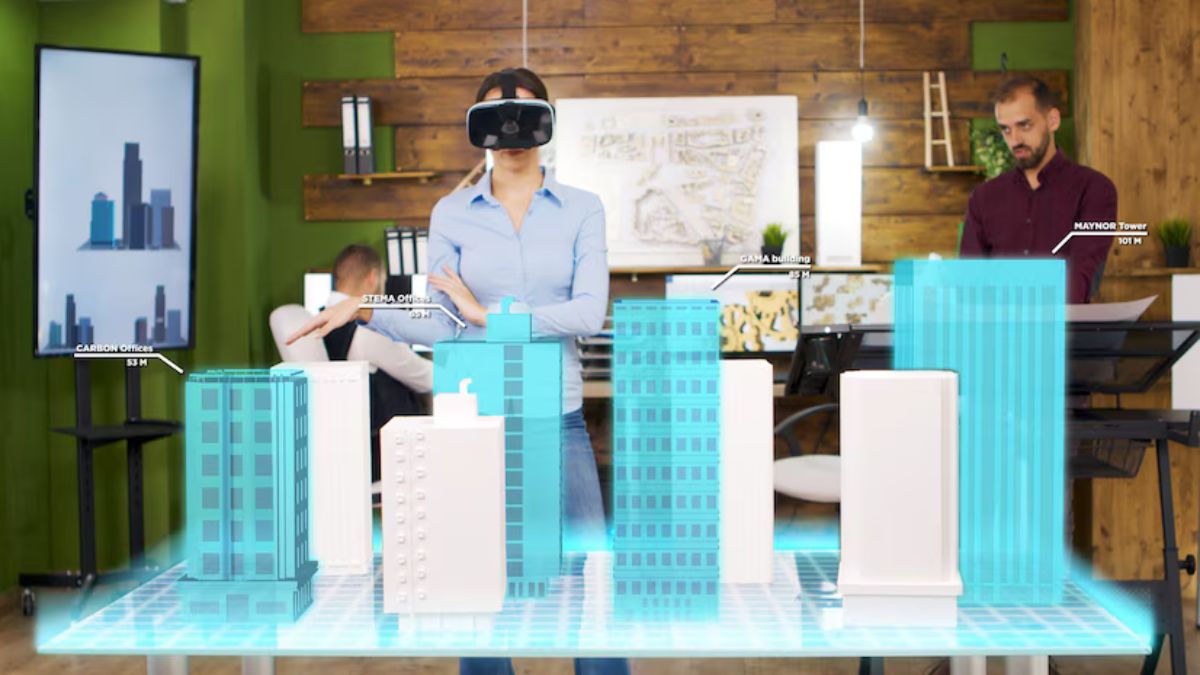Real estate is transforming, as the latest AI innovations are now being used in this industry. From streamlining processes to making the buyer’s experience better, AI has revolutionized how properties are marketed and sold. Of these developments, AI-powered virtual tours are probably the most impactful innovation, offering potential buyers an immersive way of experiencing properties without actually stepping foot inside them.
This piece explores how AI-Powered Virtual Tours: Changing the Way We Buy Real Estate, their advantages, and why they have become mandatory tools for both buyers and sellers.
The Evolution of Virtual Tours
Virtual tours have been around for a while, but the early versions were often clunky and static. They presented a series of images stitched together, which gave the viewer a very limited sense of the property. With the integration of AI, however, virtual tours have changed. They now contain dynamic features like 3D walkthroughs, interactive elements, and personalized customization options.
AI-driven tools use advanced algorithms to create realistic environments that mimic an in-person viewing experience. For example, an AI video generator can stitch images, add interactive hotspots, and even simulate different lighting conditions to give potential buyers a comprehensive understanding of the property.
Benefits of AI-Powered Virtual Tours
1. Enhanced Immersion
AI technology can make a more engaging and interactive experience as users would be able to walk through the property as if they were there in person. An AI-generated virtual tour is dynamically adapted to users’ preferences: zoom in, change perspective, or highlight something like floor textures or room dimensions. Using video apps, it can also include narration, background music, and annotations for a better understanding of the virtual tour.
2. Time and Cost Efficiency
Traveling to numerous properties can be time-consuming and costly for buyers. Virtual tours eliminate the need for physical visits, which enables the buyers to shortlist properties more efficiently. Sellers and agents also save time by showing properties to a larger group without arranging in-person showings for every prospect.
3. Personalization for Buyers
AI allows virtual tours to be customized according to the buyer’s preferences. For example, a buyer who wants a sunny living room can view a tour where the AI adjusts the lighting to simulate natural sunlight. Similarly, prospective buyers can virtually furnish a home to see how their furniture would fit in the space.
4. Wider Reach
AI-powered virtual tours can also be shared with multiple digital media channels, thus allowing potential buyers from across the globe. This is more beneficial for international clients and some relocates who might not have an opportunity to go and inspect properties physically.
Virtual Staging
AI Virtual Tours and Real Estate Future
Virtual staging is one of the key aspects used within AI-powered virtual tours. Through this feature, real estate agents can virtually furnish empty properties, thereby making them more attractive to view. With AI, one can add furniture, decorate, and even give suggestions on style preference in case a buyer wants to visualize themselves in the given space.
Real-time property customization
AI tools also enable real-time property customization during virtual tours. Buyers can change wall colors, flooring materials, or even the layout to see how the property could meet their needs. This dynamic feature helps buyers make more informed decisions.
Integration with Video Apps
With video apps now integrated, virtual tours are very accessible and convenient to use. Such apps permit the buyer to enjoy high-definition virtual tours directly on their mobile phone or tablet for convenience and portability, while also permitting sharing options where the buyer may seek advice from friends or family regarding their selection.
The Involvement of AI in Buyers’ Decisions
Perhaps one of the strong reasons for the emergence of AI in virtual tours is its capability to analyze buyer behavior. Tracking all the different manners in which the user might spend time viewing certain rooms or areas they may be zooming in on provides critical information for a real estate agent. That will help tailor his approach to exactly what is the buyer looking at.
Secondly, AI tools offer the potential for suggesting comparable listings based on virtual tour interaction for a buyer. This, along with being one of the add-ons for further enhancing a buying experience, automatically increases the opportunities for deal-closing.
Remaining Challenges and Constraints
Despite their numerous benefits, AI-powered virtual tours come with some challenges. High-quality virtual tours require substantial data, which can pose a problem for users with slower internet connections. Additionally, while AI can simulate realistic environments, it cannot completely replicate the experience of physically being in a space—such as feeling the ambiance or hearing surrounding noises.
However, with time, the future advancements of AI technology are helping bridge these limitations. Future versions of virtual tours could include haptic feedback or audio simulations that blur the line between virtual and physical experiences.
AI Virtual Tours: A Win-Win for Buyers and Sellers
Indeed, there are undeniable advantages for both buyers and sellers in the real estate market when utilizing AI-powered virtual tours. In short, buyers can visit properties at their convenience, better feel the spaces, and hence make informed decisions. Sellers, for their part, can exhibit their properties to international audiences, reduce the time that properties spend on the market, and enhance the efficiency of the sales process.
Thanks to AI video generators, it is easier and cheaper than ever to produce such virtual tours. With the help of such tools, real estate professionals can create outstanding, immersive tours that make their properties stand out in a competitive market.
Conclusion
AI-powered virtual tours are revolutionizing the way people buy real estate, offering buyers a seamless, immersive, and personalized experience. Combining AI video generators with video apps makes the process of buying property far more efficient and accessible than ever. As technology improves, virtual tours will be that much more advanced, closing the gap between the virtual and the physical world in real estate experiences.
Embracing AI-powered virtual tours is no longer a luxury but a necessity for both buyers and sellers in today’s digital-first world. They are changing how we view properties, and, more importantly, they are shaping the future of real estate itself.











